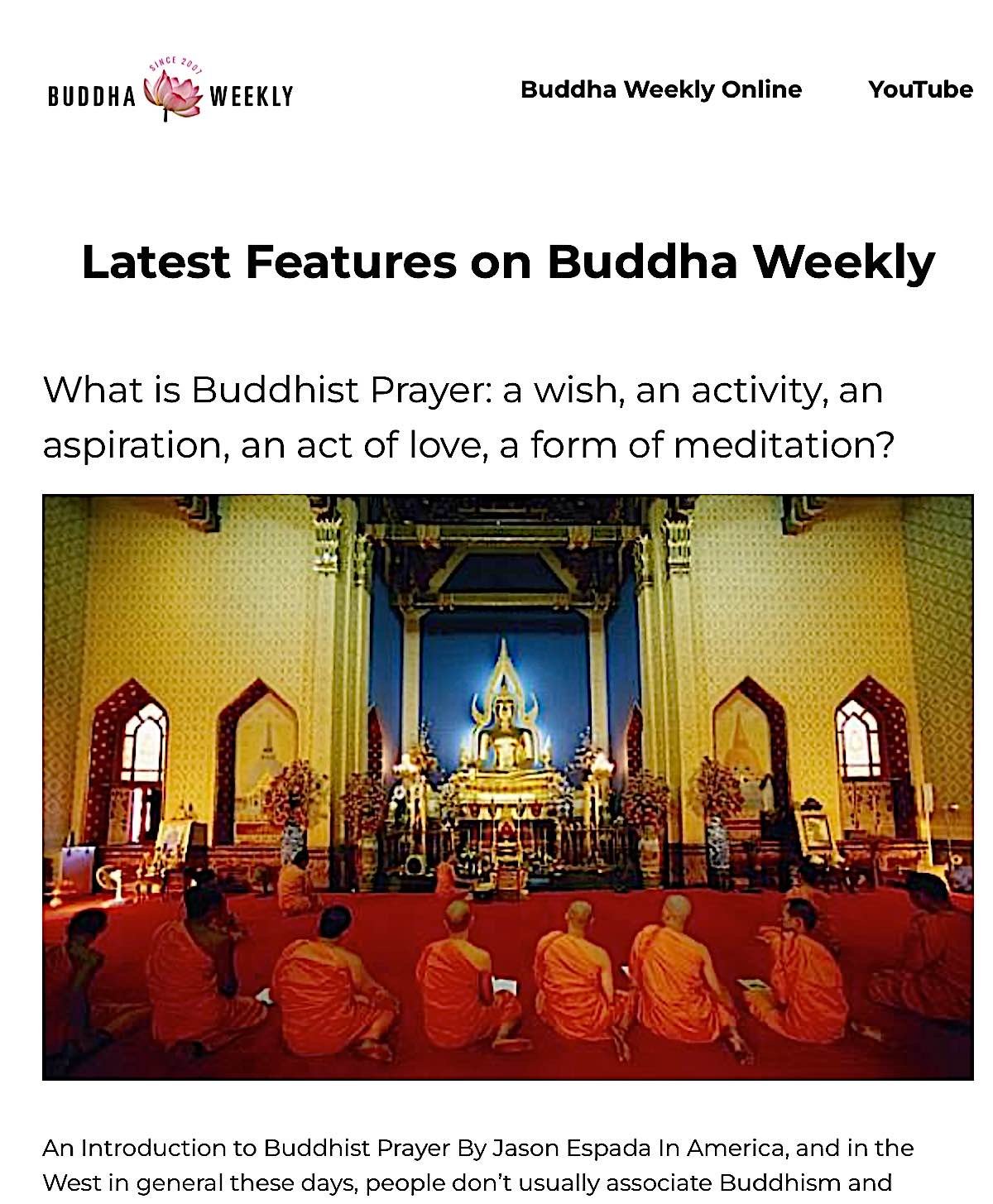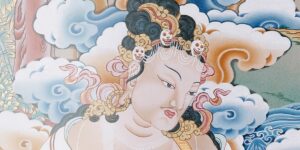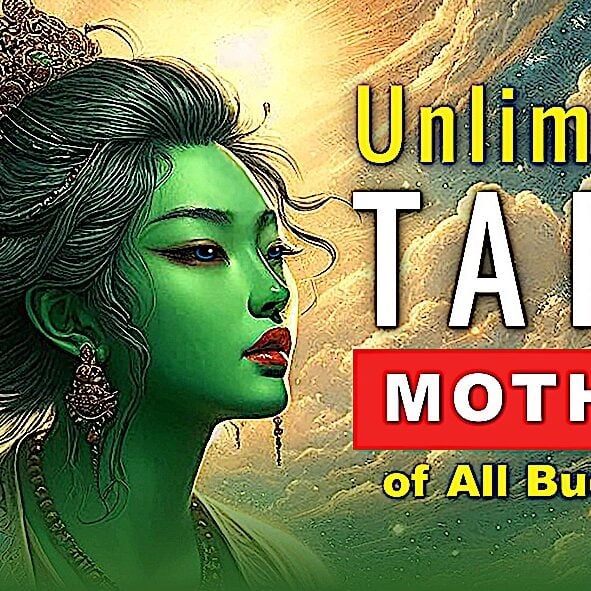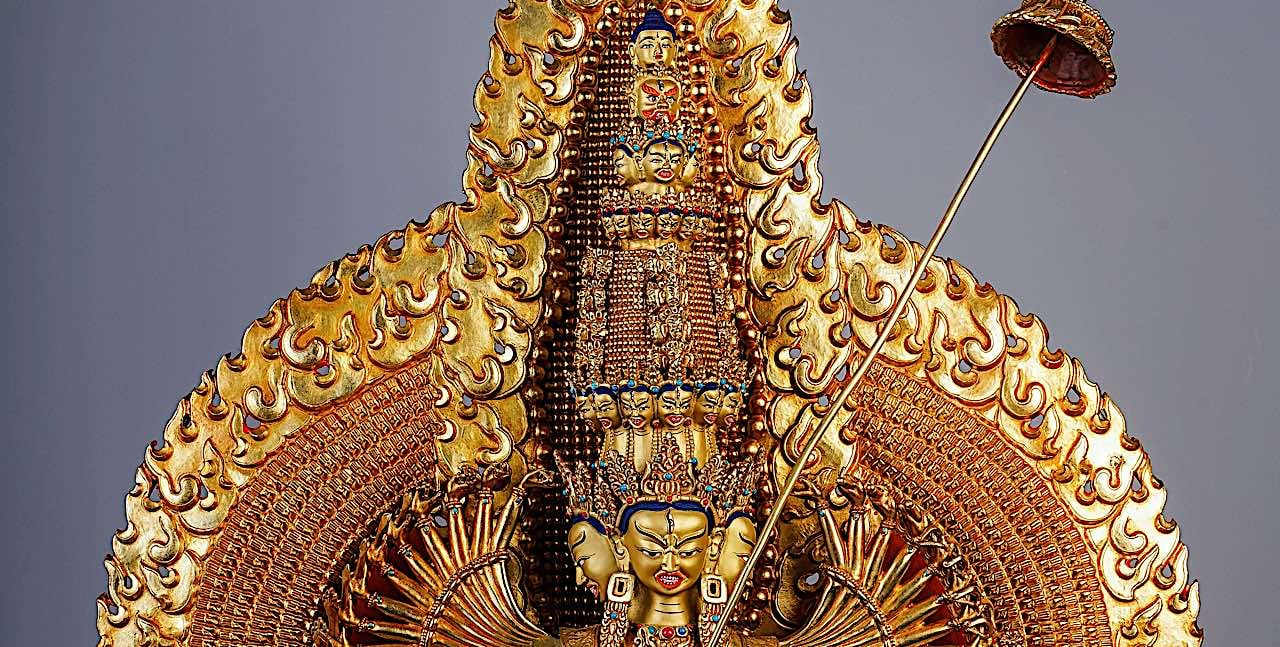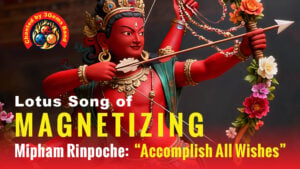Video: Tara – Swift Heroine. Mother. Saviour. Friend. Stories of Rescues; Mantra & Sadhana

Why is Tara so beloved among Mahayana Buddhists? Why is she simultaneously called Mother, Saviour, Friend, and Buddha? Why do many of us turn to Green Tara first, when we need help? What are the 21 forms of Tara? What are some of the stories of Tara rescuing suffering beings, as the heroine Goddess? We answer these questions and recount the histories of her heroic rescues in this presentation dedicated to the Mother of All Buddhas. Don’t miss the story of Delog Dewa Drolma who visited Tara’s Pureland. We also present the mantra and a very concise Sadhana by Great Marpa, the Translator, for daily meditation.
VIDEO INCLUDES MANY STORIES OF RESCUES, and HER SADHANA AND MANTRAS:
CONTENTS
00:00-01:50 Why is Tara so beloved among Mahayana Buddhists?
01:50-03:37 Tara’s Endless Forms: Four activities of Karma Mother
03:37-03:53 Bhikshuni Chodron: “All problems will be solved”
03:53-05:08 Tara Rescues Garchen Rinpoche 8 times
05:08-05:54 Song of Longing for Tara: “Everything we wish”
05:54-07:43 Tara’s Activities: Green, White, Red, Black, Yellow and more!
07:43-08:39 Tara’s element: Wind-Air, Chi, Prana & Dharma Speech
08:46-09:32 How do we call for her help? Tara is One with Us
09:32-10:58 Bokar Rinpoche: Tara saves the caravana from bandits
10:58-12:36 How Tara Works: Praying to Tara for Help
12:36-13:29 All the Mahasiddhas and Buddhas Relied on Tara
13:29-14:13 Tara’s Eight Great Laughters and the Eight Dangers
14:13-16:33 Why Tara is called Mother of All the Buddhas
16:33-19:28 Arya Tara origin stories and Avalokiteshvara’s tears
19:28-20:52 Tara’s earthly manifestations: Dakinis Mandarva, Niguma, Yeshe Tsogyal
20:52-21:31 Tara’s urquoise Pureland Yurlod Kurpa
21:31-23:08 Delog Dewa Drolma’s Inspiring Story: Visiting Tara’s Pureland
23:08-26-28 Practicing Tara in our Daily Lives
26:28-28:08 Marpa Lotsawa’s Sadhana Puja of Arya Tara
28:08 Recitation of Tara’s Sadhana begins
Other videos mentioned:
Song of Longing for Tara: https://www.youtube.com/watch?v=ED1-FBm-HC8&t
Tara Dharani Sutra Recited https://www.youtube.com/watch?v=2Ec8RKV1A8E&t=39s
White Tara Mantra in Sanskrit https://www.youtube.com/watch?v=KNEFX3Vv7Zk&t
21 Dharani Praise in Sanskrit https://www.youtube.com/watch?v=0XlYma5HW_Q
Tara’s 21 Praises in English https://www.youtube.com/watch?v=wuj98g2DqOw
21 Taras supplicating mantras https://www.youtube.com/watch?v=GSTZHJ_hjZY&t
Tara’s Mantra in Sanskrit chanted https://www.youtube.com/watch?v=7qNQ5rccrd0&t
21Taras Dharani Surya Gupta https://www.youtube.com/watch?v=rYUO7sazt3Q&t
Other links:
- Black Tara mantra in Sanskrit https://www.youtube.com/watch?v=bcXvmaL5IIQ&t
- 5 White Taras Pacifying Mantras chanted beautifully https://www.youtube.com/watch?v=6-LwBMwZX4M&t=66s
- ABOUT Black Tara: https://www.youtube.com/watch?v=sCle3cfyNIg
- #tara #taramantra #greentara #whitetara #redtara #yellowtara #blacktara #buddhism #vajrayana #tibetanbuddhism
Most Buddhists know Mother Tara — simultaneously a friend, savior, caring Bodhisattva, and enlightened being.
She manifests in endless forms. She can be action-hero Green Tara who saves us from worldly harm. Or, blessed White Tara who heals and brings longevity. Or charismatic Red Tara who attracts what is helpful into our lives. Or even fierce Black Tara, who destroys all evil. Though we honor her as the Great Mother Buddha, she is, without contradiction, an intimate and treasured friend.
Tara, like any loving Mother, is ready to jump to our aid, even in mundane areas of life. She is the “practical Buddha” — the “Karma Mother” — the Buddha most active in our lives. Her Sanskrit name translates as “a star by which to navigate” — and like a star, she is always with us whenever we look for her. How can we lose our way when her radiance never fades?
Despite enormous respect and sacred devotion for Tara, She is often just known as “Mummy Tara” to devotees.
Bhikshuni Thubten Chodron explained:
“If you put your full trust in Tara, you will receive the guidance you need and all your problems will be solved…”
His Eminence Garchen Rinpoche has a special devotion to Tara. He recounts how Tara rescued him many times in his adventurous Dharma life. He credits her directly with rescuing him from eight major and several minor threats in his great life.
It was Tara who helped the great teacher survive war in 1958, starvation in 1960, near-drowning in 1963, several incidents with food poisoning, and a car accident in 2006. He tells these stories in his biography, and at teachings. He wrote:
“What is the purpose of sharing this?
I have special devotion for Tara, though all deities are the same in essence. I always hold on to my prayer wheel tightly, and I pray to Tara. I also tell others to pray to Tara. This is why I have a lot of faith in Tara.”
This sentiment is expressed in the 18th-century Tibetan prayer the “Song of Longing for Tara” by Lama Lobsang Tenpey Gyaltsen:
“You are my guru, my yidam, my protector, my refuge, my food, my clothes, my possessions, and my friend. Since your divine quality is everything to me, let me spontaneously achieve all that I wish.”
Mother Tara is not just the rescuer. She provides us with what we need to help ourselves and others — spontaneously achieving all that we wish.
Tara appears in many forms, symbolic of her countless activities on our behalf. Her most common appearances are as a beautiful Mother Goddess, sitting on a splendid lotus and moon throne, beautiful in appearance, with one foot thrust forward ready to leap to our aid.
Her main two forms are Green and White, but she also appears in every color, symbolizing her heroic activities. Green represents the Karma family mother, her main form, with green symbolizing all activities.
More articles by this author
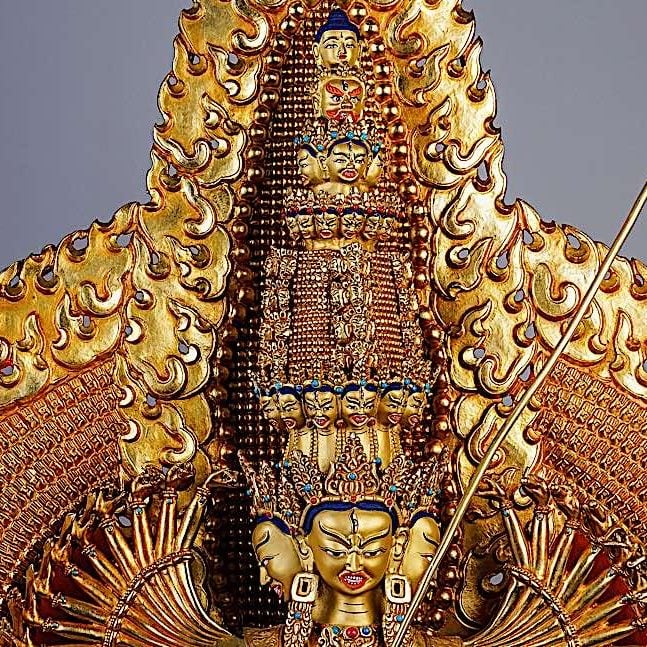
Sitatapatra or Dukkar — the ultimate protective Bodhisattva Goddess, form of Mother Tara — 1000 arms or 2 arms, she is “Aparajita” the Undefeatable One

✨ Official Music Video: 3 DEITIES LONG LIFE PUJA AND MANTRAS : Benefits long life, healing, purification, auspiciousness PERFORMED BY @3GemsBand for Supreme Merit Day! ✨
Search
Latest Features
Please support the "Spread the Dharma" mission as one of our heroic Dharma Supporting Members, or with a one-time donation.
Please Help Support the “Spread the Dharma” Mission!
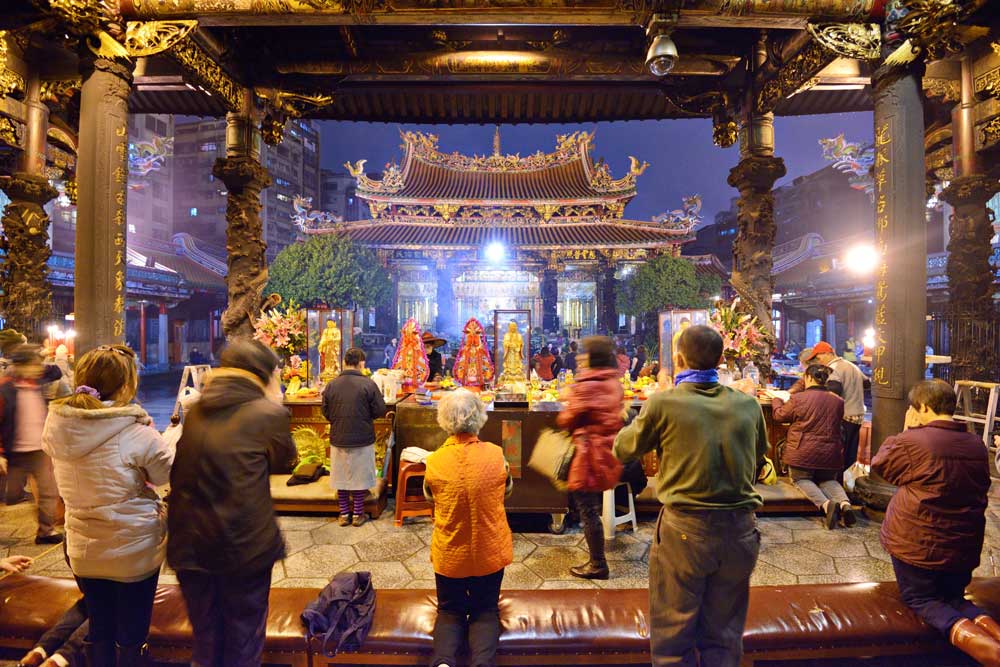
Be a part of the noble mission as a supporting member or a patron, or a volunteer contributor of content.
The power of Dharma to help sentient beings, in part, lies in ensuring access to Buddha’s precious Dharma — the mission of Buddha Weekly. We can’t do it without you!
A non-profit association since 2007, Buddha Weekly published many feature articles, videos, and, podcasts. Please consider supporting the mission to preserve and “Spread the Dharma." Your support as either a patron or a supporting member helps defray the high costs of producing quality Dharma content. Thank you! Learn more here, or become one of our super karma heroes on Patreon.
Lee Kane
Author | Buddha Weekly
Lee Kane is the editor of Buddha Weekly, since 2007. His main focuses as a writer are mindfulness techniques, meditation, Dharma and Sutra commentaries, Buddhist practices, international perspectives and traditions, Vajrayana, Mahayana, Zen. He also covers various events.
Lee also contributes as a writer to various other online magazines and blogs.

